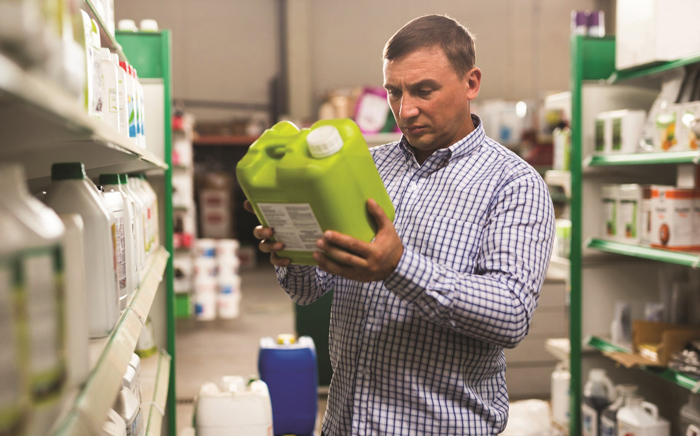The crop protection industry is governed by Act No. 36 of 1947, along with the fertiliser, farm feeds and stock remedy industries. Although some may think that this act is outdated because it was created in 1947, it is continuously kept up to date with new regulations in support of the act. The latest of these are the new Regulations Relating to Agricultural Remedies published in the Government Gazette on 25 August 2023.
These regulations brought about a number of changes and additional requirements, many of which are aimed at ensuring that anyone who works with these potentially hazardous products can do so in a manner that keeps themselves and the environment safe. One such amendment is the alignment of the regulations to the Globally Harmonized System of Classification and Labelling of Chemicals (GHS). According to GHS, the labels and safety data sheets of agricultural remedies need to follow a standardised approach in classifying and communicating the hazards of the chemical.
Such hazards, their nature and severity, are communicated through a few elements, such as hazard statements, precautionary statements, pictograms and signal words on both the label and the safety data sheet of the product. Importantly, all labels must clearly state, in capital letters, ‘READ THE LABEL BEFORE USE’ and ‘KEEP OUT OF REACH OF ANIMALS AND CHILDREN’, as well as the phrase ‘In case of poisoning, call the following number’ with the contact details of a national or provincial poison information centre. It should also have the phrase ‘Emergency number’ with the number of the registration holder’s own disaster management centre or its contracted disaster management service provider on the main panel of the product label.
Importantly, the new regulations also specify that ‘any person in control of an establishment that sells agricultural remedies shall provide safety instructions, training and awareness to the distributors, advisors and users of pesticides on safety instructions for human health and the environment’. This is an important amendment that places great responsibility on the manufacturers and distributors of these products to ensure that these products can be used with minimum risk.

Hazard categories
According to the GHS, the nature of a hazard is allocated according to a hazard class, which belongs to a hazard group or type (physical, health or environment), depicted by a pictogram. Within these classes, the severity of the hazard is then allocated in terms of a hazard category expressed as a number, for instance category 1 would be the most severe. Some of these categories are further sub-divided into divisions, which are expressed as a letter, i.e. A, B, C and so forth. According to the new regulations, a substance of concern refers to any substance that has an inherent capacity to cause an adverse effect on humans, animals or the environment and is present or is produced in a plant protection product in sufficient concentration to present risks of such an effect and complies with the criteria provided in the annexure to the regulations.
These substances of concern include active ingredients and their formulations that meet the criteria of being a carcinogen (C), mutagen (M) or reproductive toxin (R) – CMR categories 1A and 1B of the GHS. CMR category 1A refers to active ingredients and/or co-formulants that meet the criteria of a known human carcinogen, mutagen or reproductive toxin, largely based on human evidence. Category 1B refers to a presumed human carcinogen, mutagen or reproductive toxin, largely based on animal studies.
According to the new regulations, products that meet these criteria will not have their registrations renewed as from June 2024, meaning they will be phased out. There is, however, a process for registration holders to apply for derogations (exemption), but this is at the discretion of the registration holder and can only be applied for when fulfilling the criteria provided in the regulations.
Fortunately, the regulations also allow for the prioritisation of the registration of alternative remedies to replace substances of concern, as well as the fast-tracking of registrations for low-risk remedies in order to mitigate the potential loss of crop protection tools for producers.
Administrative improvements
A number of new elements in the regulations are also aimed at improving bureaucratic efficiency. For example, minor amendments to registrations no longer require an applicant to wait for approval before implementing these changes. In addition, there is no longer a requirement to submit advertisements for approval. However, the regulations are very clear about requirements that any advertisement must follow, such as including the hazard signal word and hazard statements. The ramifications for non-compliance can be severe if found that the advertisement was false, misleading or did not follow the specifications set out in the regulations.
Producer responsible organisations
Another important change is the alignment of the agricultural remedy regulations with the Extended Producer Responsibility Scheme for the Pesticide Sector, promulgated under the National Environmental Management: Waste Act (Act no. 59 of 2008). This requires agricultural remedy manufacturers to belong to a producer responsible organisation (PRO) to ensure that there is a mechanism for disposing of obsolete stocks in a responsible manner, and that empty plastic containers are recycled and placed back into the circular economy. This is an enormous feat and CropLife South Africa is proud to have had a container management programme in place long before it became a legal requirement. In fact, South Africa ranks number three in the world in terms of empty pesticide container recycling, with the aim of being in the top spot soon.
These are just a few examples of changes in the regulations that have an impact on producers (it is unfortunately not within the scope of this article to list all the changes). CropLife South Africa continues to endeavour that all its members and their clients know what their rights and responsibilities are in terms of the legislation of the country.



















